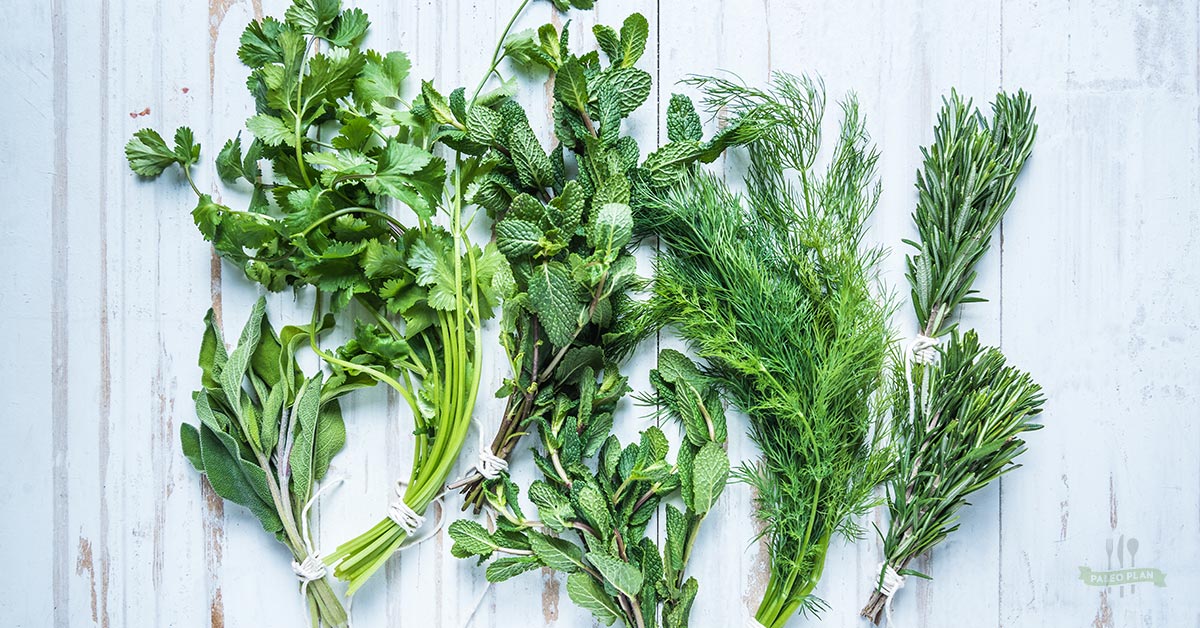
What is the best dish for fresh basil? How do you cook with chives? Use this handy guide to discover how to use the 10 most popular herbs.
Herbs are an easy way to add flavor to your dishes without disrupting the balance of fats, sugars, and salts. To truly build complexity in your meals, use them to amp up the flavor and health benefits of your favorite Paleo dishes. Knowing how to use them is a simple way to make your dishes shine.
With plenty of antioxidants and delicious flavor, herbs can be used in roasts, soups, pestos, compound butters, salads, smoothies, and the list goes on! (1) Add gentle, robust, citrusy, or even warming flavors to an otherwise one-note dish. Simply adding something like thyme to butter will impress with its aroma and flavor, for example.
Starting and Finishing Herbs

Herbs tend to fall into two primary categories: starting and finishing.
Starting herbs are heartier and sturdier. They are often earthy and can even be woody in texture. These sturdy herbs are great to use at the beginning of a recipe – especially when heating or using in a stock or sauté – so that they may impart their flavor early in the cooking process.
If you use these starting herbs toward the end of a recipe, they haven’t had the time to break down and become palatable, nor have they had the chance to really flavor your dish.
Herbs that work best for starting include:
- Rosemary
- Sage
- Bay leaf
- Thyme
- Lavender
- Lemongrass
- Savory
- Curry
- Verbena
On the other hand, some herbs are delicate and best grown at home to pinch from a pot for immediate use. Herbs like this are best used raw and at the end of a recipe so as not to bruise, wilt, or lose their flavor.
Herbs that are better saved for finishing include:
- Parsley
- Chives
- Dill
- Thyme
- Mint
- Basil
- Cilantro
- Oregano
- Marjoram
- Sorrel
- Chervil
- Tarragon
How to Store Your Herbs to Last
No one wants to feel like their herbs are being wasted, whether homegrown or purchased. Most recipes use just a few sprigs or leaves, and the rest may sit for some time. These little greens wilt and go bad quickly when not stored properly, so here are some tips for getting the most out of your herbage.
1. Clean Your Herbs
Always submerge your herbs when washing. Fill a bowl with cool water and agitate the herbs gently. Lift from the water and let dry on towels in a single layer, patting off excess moisture with another towel. You can also use a salad spinner if you prefer.
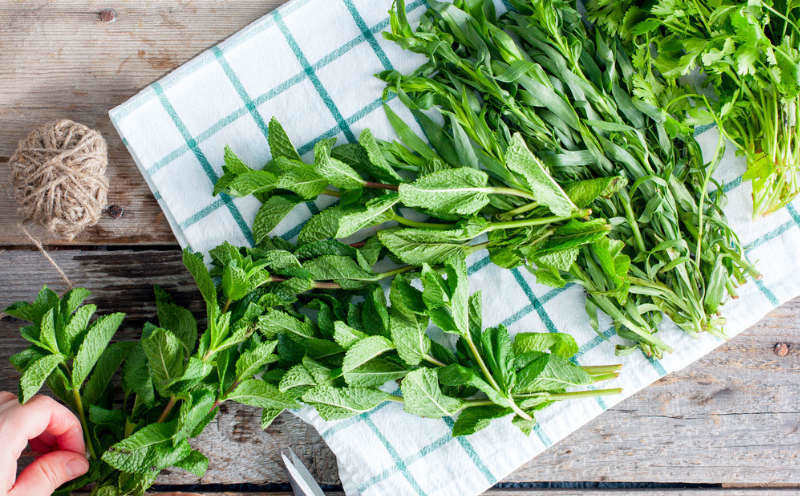
2. Store Tender Herbs Like a Bouquet
For most finishing herbs, you can trim the stems and pick off any discolored or wilting leaves. Put about an inch of water in a jar and store like a bouquet. Cover your bouquet with an overturned baggie and adhere with a rubber band. Store in the fridge. They will keep for two to three weeks.
Basil is an exception to this rule, as you can store it like a bouquet on your counter or windowsill. Enjoy the fresh smell!
3. Store Leafy Herbs in Glass
For leafy herbs, pick the leaves off and discard the stems. Alternatively, you can save the stems for stock. Wash and dry your leaves gently, then add to a paper towel-lined glass bowl or container. This storage method encourages frequent use, since they’re ready to go. Herbs will keep for two to three weeks.
4. Store Sturdy Herbs in the Crisper
Lay out long sprigs of rosemary or thyme in a single layer on a slightly damp paper towel. Gently roll them up in the paper towel and store in a large baggy or container. Keep them in a crisper drawer for best results. They will last two to three weeks.
5. Freeze Herbs in Ice Cube Trays
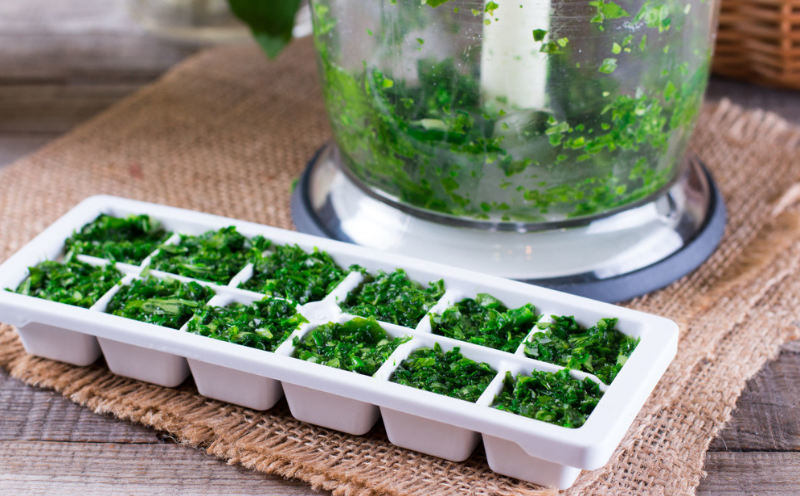
If your herbs are on their way to the compost bin, or you simply want a super-convenient way to prepare them, whiz them in a food processor and freeze in ice cube trays. These cubes can be kept in freezer bags or a freezer-safe container. Drop into soups and sauces when needed. They will last up to three months.
10 Popular Herbs and How to Use Them
While there are countless varieties of common herbs used throughout various cuisines, here are 10 popular herbs found in many dishes. From fresh basil to earthy sage, use this list for inspiration for when and how to cook with herbs.
1. Basil
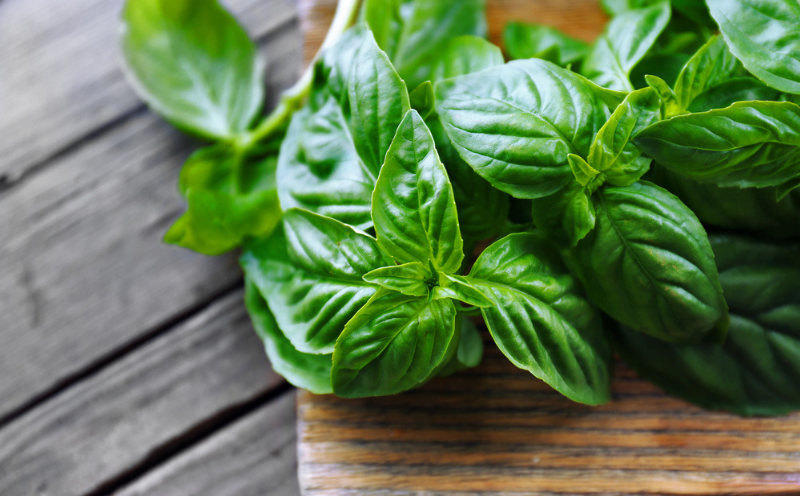
Basil is great in a variety of recipes. From Italian to Thai dishes, basil is a key ingredient in many classic favorites. Use fresh or dried, chopped, or even the whole leaf for a pretty presentation. Basil is a great herb to start off your experimentation.
When to use fresh basil:
- As a finishing herb
- Whole or julienned in green salads and fruit salads
- With berries and melon
- Blended into pestos and dressings for salad
- In dips
- Blended into legume-free hummus (like cauliflower or sweet potato hummus)
- Pulsed in a food processor with nuts, garlic, and olive oil
- With heirloom tomatoes
- In stir-fries and recipes that use coconut milk, like soups and curries (opt for Thai basil here)
When to use dried basil:
- As a starting herb in tomato sauces and sautés
- In Paleo mayo with fresh garlic to make a sauce for fish or a dip for sweet potato fries
2. Tarragon
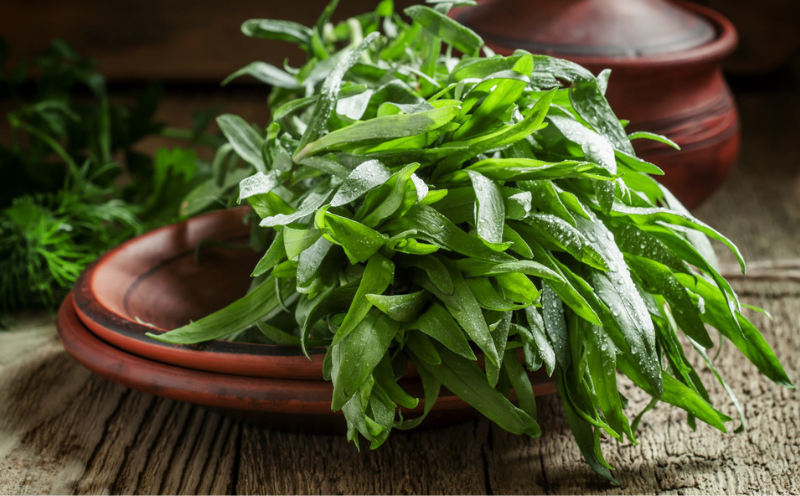
Tarragon proves your culinary chops. With slight notes of licorice and grassy-sweet notes, tarragon is unmistakable when added to a dish.
When to use fresh tarragon:
- As a finishing herb
- Sprinkled on top of hot dishes after cooking
- With shrimp or prawn dishes
- Mixed into grass-fed butter to create a compound butter for fish, shellfish, or steak
- Chopped and added to chicken salad with grapes and walnuts
- In hearty dishes, like stuffed mushrooms, meatballs, or stuffing
When to use dried tarragon:
- As a starting herb
- In a dry-rub for pork loin and chops
3. Sage
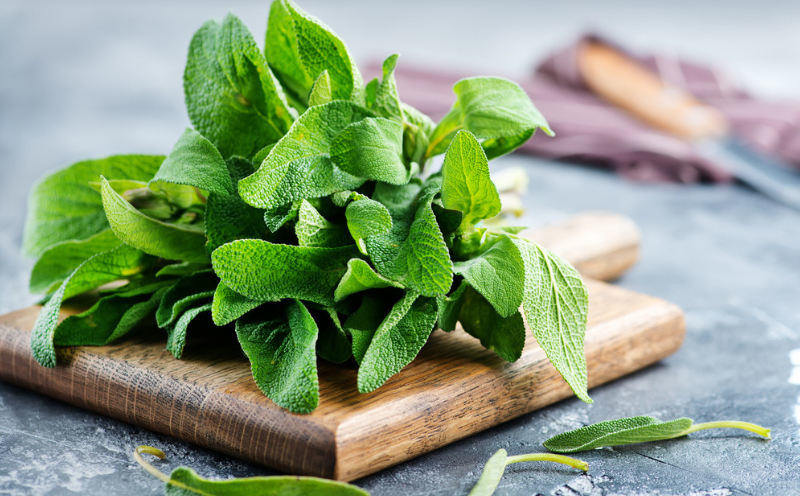
Sage offers the most earthy and comforting of flavors. There are several varieties of culinary sage, including purple sage, pineapple sage, and even wild sage that grows in dry, upland areas.
When to use sage, fresh or dried:
- As a starting herb
- To garnish meat and vegetable “noodle” dishes
- In a red wine sauce
- With pork dishes
- Rubbed over roasted chicken
- Steeped and simmered for brines and stocks
4. Thyme
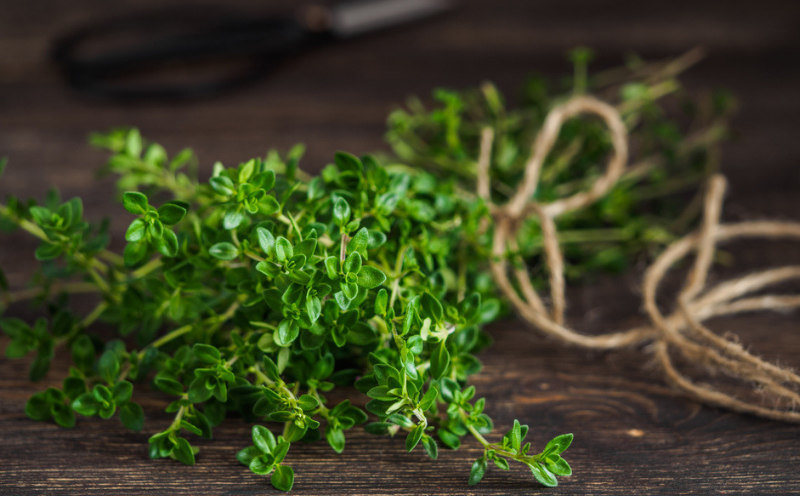
This delicate herb transcends boundaries; it is sturdy enough to use at the beginning of a recipe, and delicate and vibrant enough to use at the end. Lively yet delicate in flavor, thyme is popular for good reason. The aroma of thyme is even said to be mood-enhancing.
When to use thyme, fresh or dried:
- As a starting or finishing herb
- Added to flake salt for a compound finishing salt for dishes
- With honey for an herbaceous, sweet drizzle over meats or fruits
- As a garnish
- In cashew cream sauces
- Added to sweet baked goods like breads and muffins
- In roasted golden squash dishes
- As a rub for meat roasts
- In stews and stocks
5. Dill
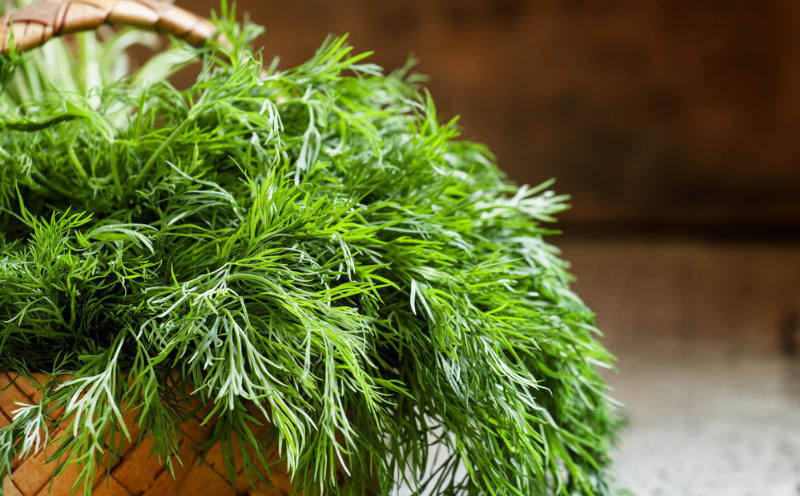
Dill is a feathery, pungent, and fresh weed. The flavor of dill is unmistakable, and of course, it might remind you of pickles. Dill loses its flavor rapidly, so opt for fresh dill only. Its lovely yellow flowers are also edible and can liven up your dishes!
When to use fresh dill:
- As a finishing herb for maximum flavor
- In green salads
- Mixed in tuna salad with capers and lemon
- With carrots, roasted or in chilled carrot soup
- Added in slaw with cucumbers, radish, and cabbage
- In creamy salad dressing
- With lemon and fish
- In soft scrambled eggs with cured or smoked fish
6. Chives
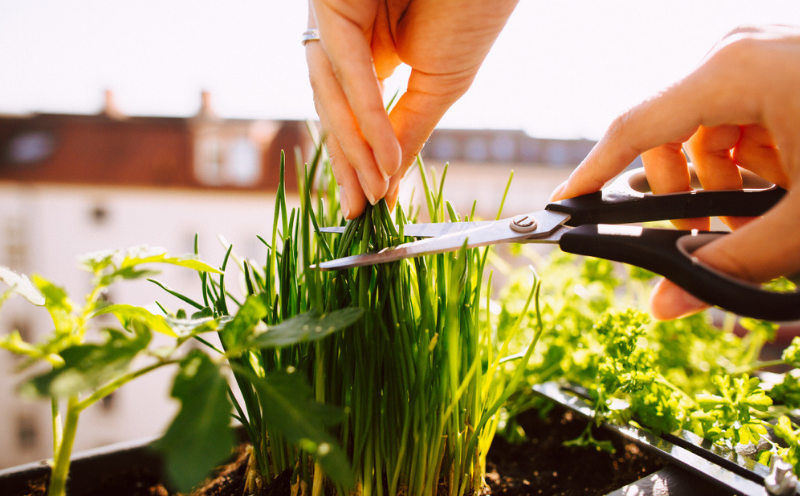
Chives have a light and onion-y flavor. Their tasty purple flower blooms should not be missed. Chives grow like weeds, so they’re wonderful to bulk up your home garden. Chives might be the missing element to make a good dish a great one. Like dill, chives are best fresh, so skip the dried version altogether.
When to use fresh chives:
- As a finishing herb
- Sprinkled over deviled eggs
- In salads
- Blended into dressings
- In spreads and dips
- To top soups, chilis, and curries
- In shellfish dishes
7. Parsley

Flat-leaf parsley is the most recognizable and available herb on the market. The flat leaf variety offers a palatable, strong, and almost celery-like flavor. Plus, it adds a vibrant pop of green to any dish.
When to use fresh parsley:
- As a finishing herb
- In stocks and bone broth
- In herb-based salads
- As a base for pesto with pecans
- In soups and stocks, for garnish
- In compound butter
- With fish dishes
- With lemon and chicken
- Fried in a high-smoke-point oil for a crunchy garnish
8. Rosemary
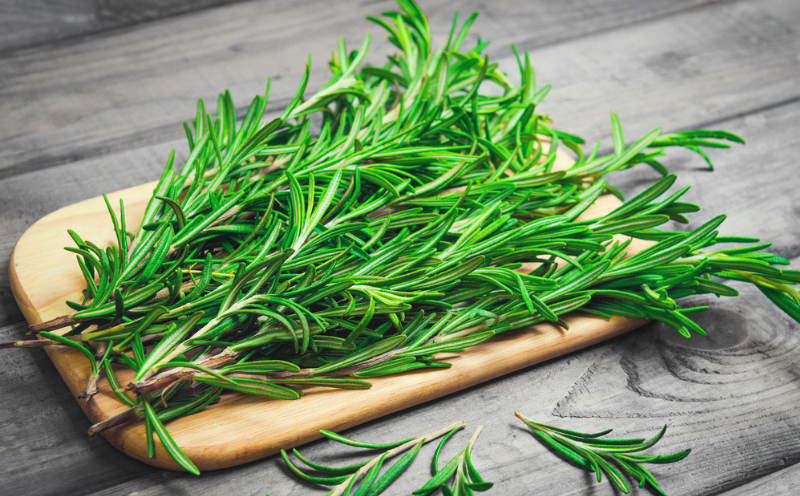
Rosemary is intoxicating and pungent. The smell is even said to boost memory and alleviate stress. It grows as a sturdy bush and holds up well through the colder seasons. Some varieties have small edible flowers, too.
When to use rosemary, fresh or dried:
- As both a starting and a finishing herb, when chopped finely
- With whole roasted chicken, sturdy white fish, pork chops and tenderloin
- Steeped in olive oil and used as a drizzle
- With roasted sweet potatoes
- As skewers for kebabs (the sturdy stems)
9. Sorrel
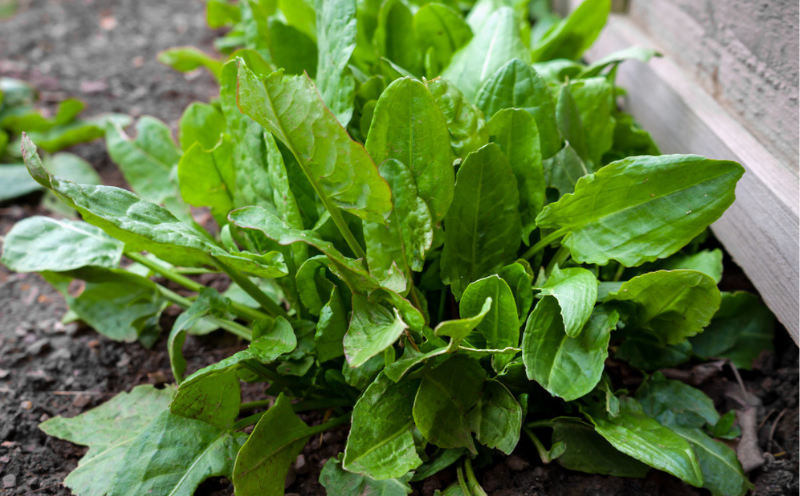
This wild herb is foraged and can be found in your very own front yard! Sorrel is tangy and lemony, and most tender and tasty in the early spring. While not typically found in grocery stores, it has been around for ages. It’s popular in older cookbooks and recipes due to its major health benefits. Sorrel is high in vitamin C and good for cleansing the blood; it was frequently found in many 20th century herbal remedies. Always opt for fresh sorrel.
When to use fresh sorrel:
- In green and fruit salads
- Mixed in Paleo cream sauces
- With seafood
- In soups
- Juiced with other vegetables
10. Mint
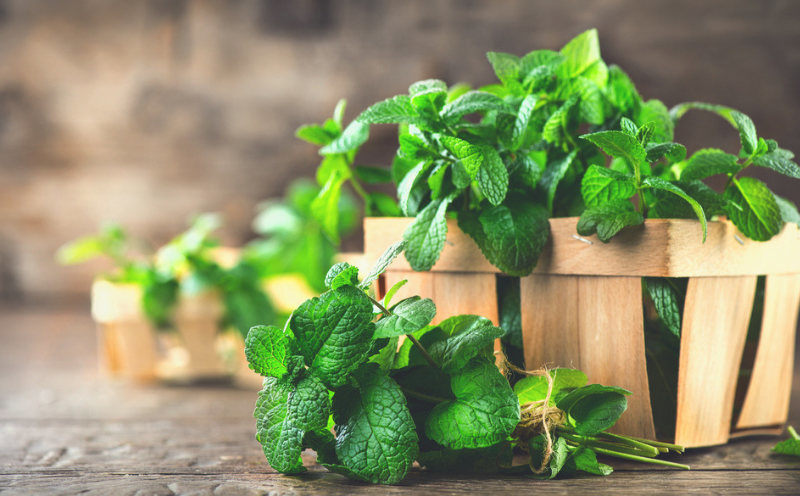
Mint often gets overlooked in the savory world. Yes, it’s delicious muddled into your mocktail and added to iced tea, but it’s also excellent incorporated in savory dishes. Mint comes in several varieties and grows fast, so allow for lots of space or plant in a large pot to contain this prolific plant. Always use fresh mint.
When to use fresh mint:
- In Asian-inspired dishes
- Added to green or fruit salads
- In smoothies
- With cacao nibs and powder in baked goods
4 Popular Herb Blends to Get You Started
You don’t have to opt for just one herb per dish! These blends are classics and improve any of the suggested dishes with their complementary flavors. Bonus: They all work in several applications, from curries to salads.
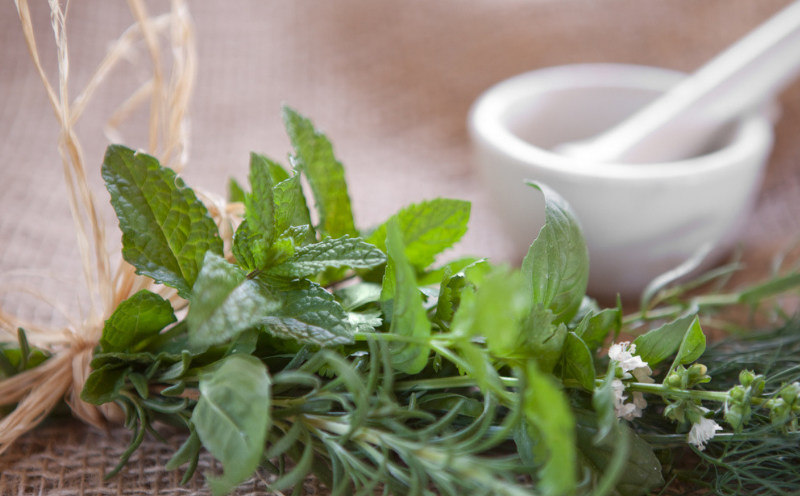
1. Fresh Basil, Mint, Cilantro
This blend lends itself to Asian dishes. If you are making a Thai or Indian curry, this mix offers bright and complex flavors. It’s also great in coconut milk-based soups and sauces along with ginger root and lemongrass.
2. Oregano, Basil, Marjoram
This trio is fantastic when added to a tomato or cashew cream sauce over zucchini noodle pasta, or used to top a cauliflower Paleo pizza crust. It also pairs wonderfully with dishes that use olives and capers. This blend is great steeped in olive oil for a finishing drizzle on salads and savory Paleo breads, too.
3. Dill and Chives
Keep chopped dill and chives in a little container in your fridge and sprinkle over scrambled eggs, fish, salads, and atop just about every soup and stew!
4. Sage, Lavender, Rosemary, Thyme
This elegant blend is a showstopper. Use as a rub for whole chicken, or over pork loin and roasts. It’s also a great rub for roasted summer and winter squash, carrots, and Portobello steaks.
The Bottom Line
There are many herb varieties to choose from. Experimenting with them, growing them yourself, and practicing different ways to make your meals exciting is a surefire way to keep your healthy lifestyle interesting and tasty.
(Read This Next: How to Grow a Garden Anywhere!)
